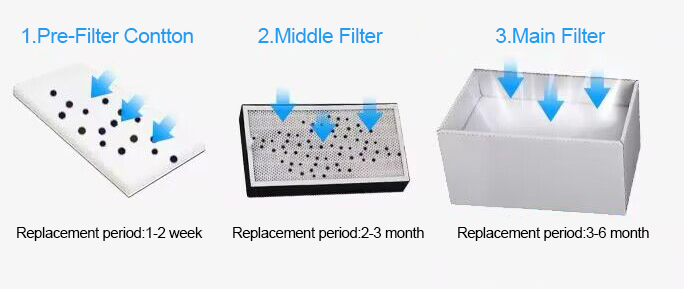How do You Maintain a Fume Extractor?
Fume extractors are commonly used in various settings, such as laboratories, workshops, or manufacturing facilities, to remove harmful fumes, dust, or particles from the air. Regular maintenance not only ensures the efficient operation of the fume evacuator but also effectively removes harmful fumes and particles, helping to create a safer and healthier working environment. So how to maintain fume extractors in your daily life? Here are some general guidelines for maintaining a fume extractor.
Tips for Maintaining the Fume Extractor
-
Read the User Manual: Familiarize yourself with the manufacturer's instructions and recommendations for maintenance. The user manual will provide specific guidance on how to care for your particular fume extraction unit model.
-
Regular Cleaning: Clean the exterior of the fume extractor regularly to remove any dust or debris that might accumulate. Use a soft cloth or a mild cleaning solution to wipe down the surfaces. Be sure to turn off and unplug the equipment before cleaning.
-
Filter Replacement: The filters in the fume extractors are crucial for trapping and removing contaminants. Check the filter status regularly, and replace them as recommended by the manufacturer. Due to the different amounts of pollution produced in different occasions, the replacement cycle needs to depend on the actual situation.

-
Filter Cleaning: Some fume extractor system filters are designed to be cleaned and reused. If this is the case with your fume purifier, follow the manufacturer's instructions for cleaning the filters. Typically, you can wash them with water or use compressed air to blow out the accumulated particles.
-
Inspect Hoses and Ducts: Check the hoses and ducts that connect the fume hood to the workstation or source of fumes. Make sure they are free from blockages, cracks, or other damage that could hinder the airflow. If any issues are found, replace or repair the damaged parts.
-
Check Airflow and Suction: Periodically test the airflow and suction strength of the fume abatement system to ensure it's functioning correctly. If you notice a decrease in performance, check the filters and hoses for any issues.
-
Electrical Components: Inspect the electrical components and connections for any signs of damage or wear. Make sure all power cords and plugs are in good condition.
-
Calibration: If your smoke extractor has any adjustable settings or calibration options, follow the instructions to calibrate the unit as needed.
- Safety Inspections: If your workplace requires regular safety inspections, include the fume extractor equipment as part of the inspection process. Address any maintenance or repair needs promptly.
-
Follow the Manufacturer's Instructions: Always refer to the user manual or guidelines provided by the manufacturer for specific maintenance instructions and schedules. Different models may have unique requirements.
-
Professional Servicing: If you encounter any issues you are not comfortable handling or suspect a more complex problem with the ventilation system, contact the manufacturer's service center or a qualified technician for professional servicing.
Remember that maintenance requirements can vary between different fume extractor models, so it's essential to follow the specific recommendations provided by the manufacturer in the user manual. Regular maintenance will help keep the fume extractor device functioning optimally and protect the health and safety of those working in the area.

